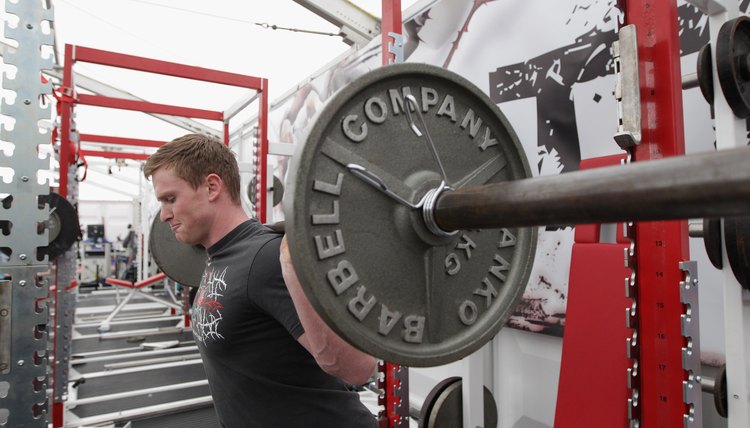How to Become a Good Powerlifter

Powerlifting involves three exercises -- squats, deadlifts and bench presses. In competition, you have three attempts to do each lift. Your highest successful lift for each exercise is taken and added together to make your total. The person with the highest total is the winner. The emphasis of powerlifting is not only about getting stronger and winning contests but also on pushing yourself and having fun. To become a good powerlifter, and stand a chance of winning competitions, you need to carefully consider your training program, diet, and your attitude toward the sport.
Decide why you want to powerlift. According to competitive lifter Roger Broeg of powerlifting website CriticalBench.com, too many beginner lifters try to chase records, rather than focus on having fun and gradually increasing strength. To begin with, you won't be competing with the top lifters, and the only competition you have is with yourself, so make your workouts challenging, but remember to have fun.
Choose a tried and tested powerlifting routine. Powerlifting is very different than bodybuilding or general strength training, so you need a routine that reflects that. Strength coach AJ Roberts, holder of a 1008 lb squat, 710 lb bench press and 705 lb deadlift recommends the Westside Barbell Method. This involves training four days per week -- two days for your upper body, and two days for your lower body. The upper and lower body sessions are then broken down further, so you do one heavy day for each and do one dynamic or speed day, where you work on technique and force production.
Focus on the three main lifts. Squats, deadlifts and bench presses should be the foundation of your routine. In week one of your training plan, do heavy squats on Monday, speed bench presses on Tuesday, speed deadlifts on Thursday and heavy bench presses on Friday. In week two, do the same but with speed squats on Monday and heavy deadlifts on Thursday. Aim to increase the weights you use in the heavy sessions every week, while maintaining perfect form. After your main exercises, perform 30 minutes of accessory exercises such as glute ham raises, front squats and lunges for your lower body, and chin-ups, rows and dumbbell presses for your upper body.
Strive to increase your strength consistently. Training website ExRx recommends aiming to hit certain strength standards on your powerlifts. Strength standards vary depending on your weight, but an intermediate male weighing 198 lbs should aim for a 215 lbs bench press, 285 lbs squat and 335 lbs deadlift. To reach elite standard at the same body weight, lifts of 360 lbs, 505 lbs and 565 lbs are needed, respectively. Set yourself a new strength target every few months.
Consume enough food to increase your strength, build muscle mass and maintain energy levels for training. The United States Department of Agriculture recommends that active men and women should eat between 2400 and 3200 and 2000 to 2400 calories per day, respectively. However, you may find that you need more than this. Start with these figures and adjust as needed. If your strength is plateauing, add in an extra 250 calories per day, or if you're putting on weight too quickly, reduce your daily intake by 250 calories. Base your diet around nutritious whole foods such as meat, fish, dairy products, fruits, vegetables, nuts and grains.
Tips
Find an experienced powerlifter to train with if possible. Their experience and advice will be invaluable.
Warnings
Always consult your doctor before beginning a powerlifting routine or diet.
References
Resources
- The Westside Barbell Book of Methods: Louie Simmons: 2008
Writer Bio
Mike Samuels started writing for his own fitness website and local publications in 2008. He graduated from Peter Symonds College in the UK with A Levels in law, business and sports science, and is a fully qualified personal trainer, sports massage therapist and corrective exercise specialist with accreditations from Premier Global International.
